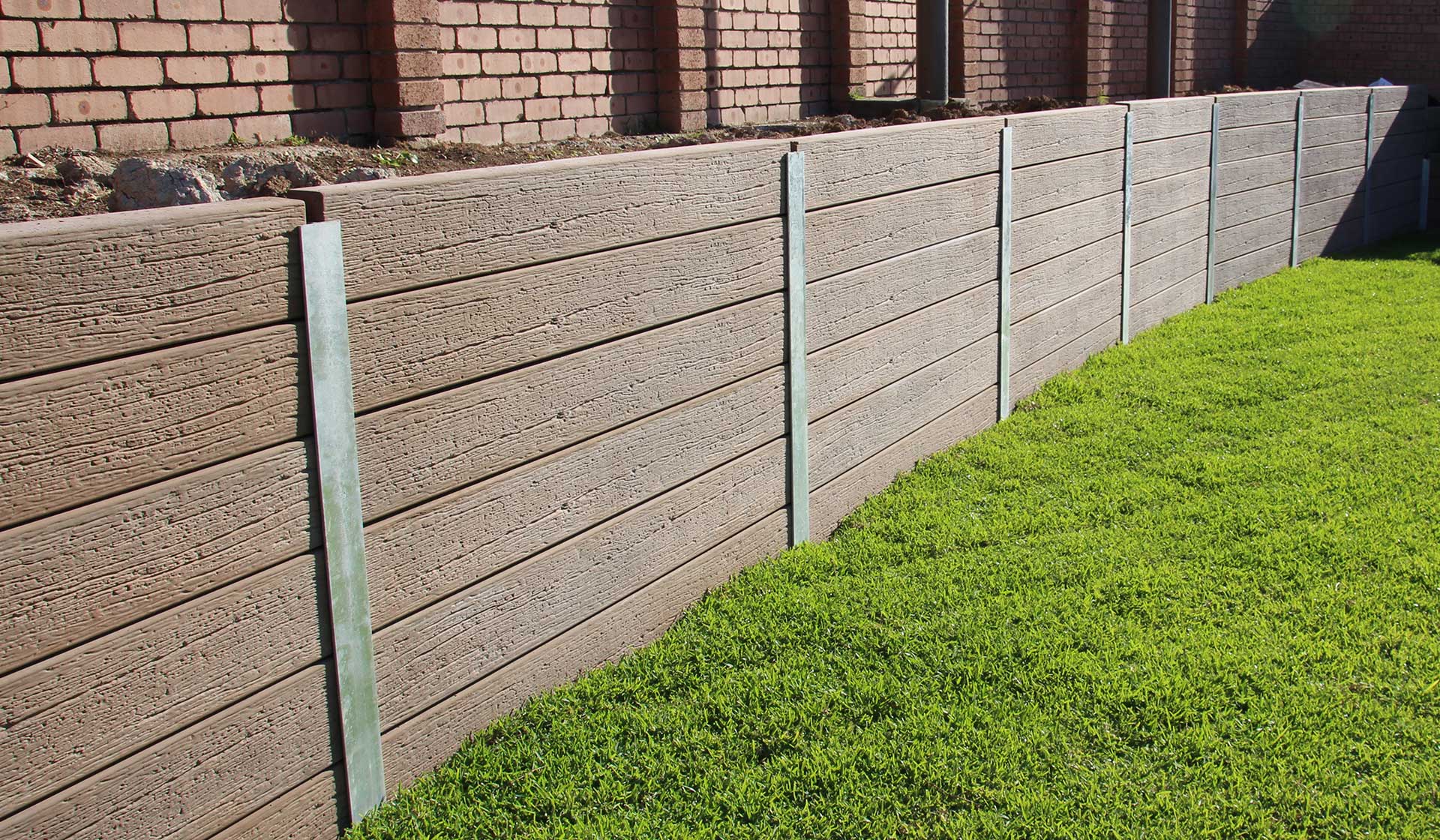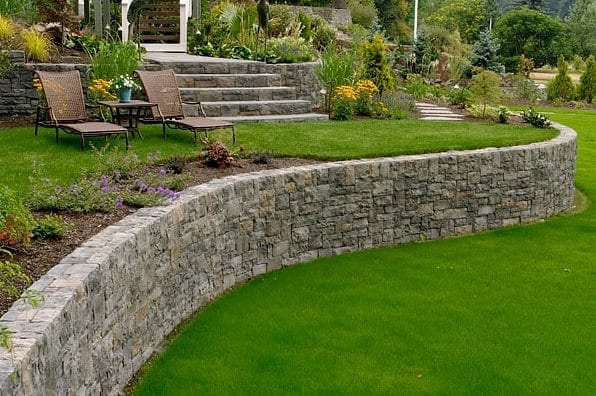Selecting the Right Materials for Retaining Walls Sunshine Coast Projects
Selecting the Right Materials for Retaining Walls Sunshine Coast Projects
Blog Article
Ensuring Structural Integrity: The Significance of Correctly Built Maintaining Wall Surfaces in Protecting Against Slope Failing
In the world of civil engineering and construction, the importance of correctly built maintaining wall surfaces in avoiding incline failure can not be downplayed. These structures serve as critical safeguards versus the all-natural forces that can destabilize slopes and create possibly dreadful repercussions. Comprehending the precise design factors to consider, building approaches, and upkeep techniques related to maintaining walls is basic in guaranteeing their efficacy and long life. By checking out the elaborate interaction in between these aspects, a deeper understanding of the essential role that preserving walls play in preserving architectural stability and avoiding incline failure emerges. Retaining Walls Sunshine Coast.
Role of Retaining Walls in Stability
The indispensability of preserving wall surfaces in ensuring slope stability is vital in civil design practices. Keeping walls serve an important duty in stopping dirt erosion, taking care of water drainage, and keeping the architectural integrity of slopes. By supporting vertical or near-vertical grade modifications, retaining wall surfaces assist to rearrange lateral pressure exerted by the dirt, therefore reducing the threat of incline failing.
One key feature of retaining walls is to combat the force of gravity acting on the soil mass behind them. This is attained with proper layout and construction, which takes into consideration factors such as soil type, wall height, drainage arrangements, and prospective surcharge tons. By effectively retaining dirt within specified borders, these frameworks aid to stabilize inclines and prevent landslides.
Moreover, maintaining wall surfaces add to the visual appeals of landscapes while supplying useful advantages. They can create terraced degrees for landscaping, support highways or frameworks on hillsides, and improve the general use of sloped terrain. Essentially, retaining walls play an important role in maintaining slope stability and ensuring the safety and long life of civil design jobs.
Elements Influencing Wall Surface Performance
Aspects that influence the efficiency of maintaining wall surfaces consist of dirt residential properties, wall design, and external tons. Appropriate wall surface layout takes into consideration variables like wall surface elevation, wall surface kind (e.g., gravity walls, cantilever walls), support products, drain systems, and building and construction methods to make sure the wall surface can hold up against the lateral stress exerted by the retained soil. By considering these variables adequately, designers can create preserving wall surfaces that successfully stop incline failing and make sure lasting architectural integrity.
Layout Factors To Consider for Maintaining Wall Surfaces
Including the important facets of dirt residential or commercial properties and external lots right into the structural style procedure is necessary for establishing effective maintaining walls that ensure incline security. When designing retaining wall surfaces, engineers have to carefully review the qualities of the surrounding soil, including its compaction, kind, and drain residential properties. Comprehending these dirt properties is essential for figuring out the ideal wall surface height, density, and reinforcement needed to endure the side stress exerted view website by the soil mass.
Additionally, exterior lots such as surcharge tons from nearby structures or traffic, along with seismic forces, must be considered during the layout stage. These tons can significantly affect the security and efficiency of a maintaining wall surface, demanding making use of proper style methods look these up and products to alleviate prospective failing risks.
Additionally, the selection of suitable materials, such as concrete, stone, or timber, need to line up with the site-specific conditions and aesthetic needs. Aspect of safety factors to consider, water drainage provisions, and building and construction methods are likewise important facets that affect the total style and performance of maintaining walls in preventing incline failure. By thoroughly thinking about these layout factors to consider, engineers can make certain the architectural stability and long-lasting stability of keeping wall surfaces.

Building Best Practices for Toughness
When building preserving walls for ideal toughness and long life, adherence to industry-standard methods and thorough attention to information are extremely important. To guarantee the sturdiness of a maintaining wall surface, appropriate site preparation is necessary. This consists of ample compaction of the soil, proper water drainage systems, and guaranteeing the wall surface's structure is audio. Making use of high-grade products, such as concrete blocks or all-natural rock, is critical for the long life of the framework. In addition, using skilled specialists with experience in constructing retaining walls can substantially impact the durability of the end product.
Including reinforcement methods, such as geogrids or steel bars, can improve the architectural stability of the preserving wall and prevent prospective failings. Correct backfilling procedures, consisting of compaction and drain factors to consider, are additionally vital for the wall's longevity. Regular maintenance and inspections are suggested to attend to any kind of indicators of wear, erosion, or structural issues promptly. By complying with these building and construction ideal techniques, retaining walls can withstand the test of time and efficiently stop incline failing.
Significance of Correct Upkeep
Regular upkeep is important for preserving the architectural stability and performance of keeping walls over time. To ensure that maintaining walls continue to execute their intended function efficiently, normal he has a good point assessments must be conducted to determine any kind of signs of wear and tear.

Final Thought
Finally, keeping walls play a critical role in guaranteeing architectural stability and protecting against incline failing. By taking into consideration factors affecting wall surface performance, sticking to create factors to consider, complying with building finest methods, and applying correct upkeep, the longevity of preserving wall surfaces can be taken full advantage of. Retaining Walls Sunshine Coast. It is important to identify the relevance of effectively created maintaining walls in maintaining security and stopping prospective risks connected with incline failing
Elements that influence the performance of preserving walls include soil properties, wall surface design, and external lots. Correct wall style takes into consideration aspects like wall height, wall kind (e.g., gravity walls, cantilever walls), support materials, drain systems, and building techniques to ensure the wall surface can withstand the side stress put in by the preserved dirt. By taking into consideration these aspects comprehensively, designers can create preserving wall surfaces that successfully prevent incline failing and make sure long-lasting architectural stability.
Maintenance jobs may include getting rid of drainage systems to prevent water buildup behind the wall surface, fixing any noticeable fractures or damage, and making certain that the wall is free from greenery that can put in pressure on the framework. By thinking about elements influencing wall effectiveness, adhering to design considerations, complying with building and construction best practices, and carrying out proper upkeep, the longevity of keeping wall surfaces can be maximized.
Report this page